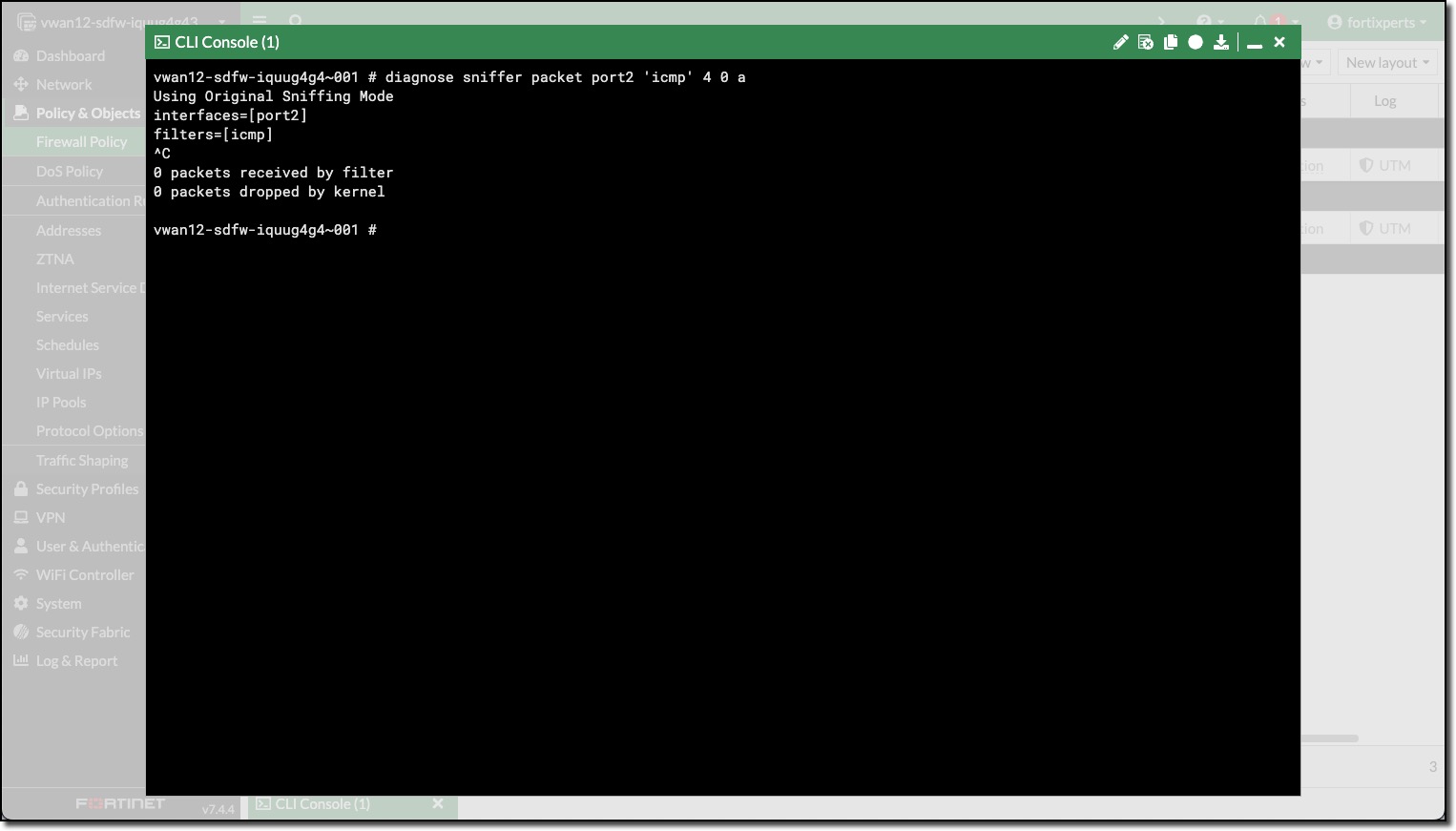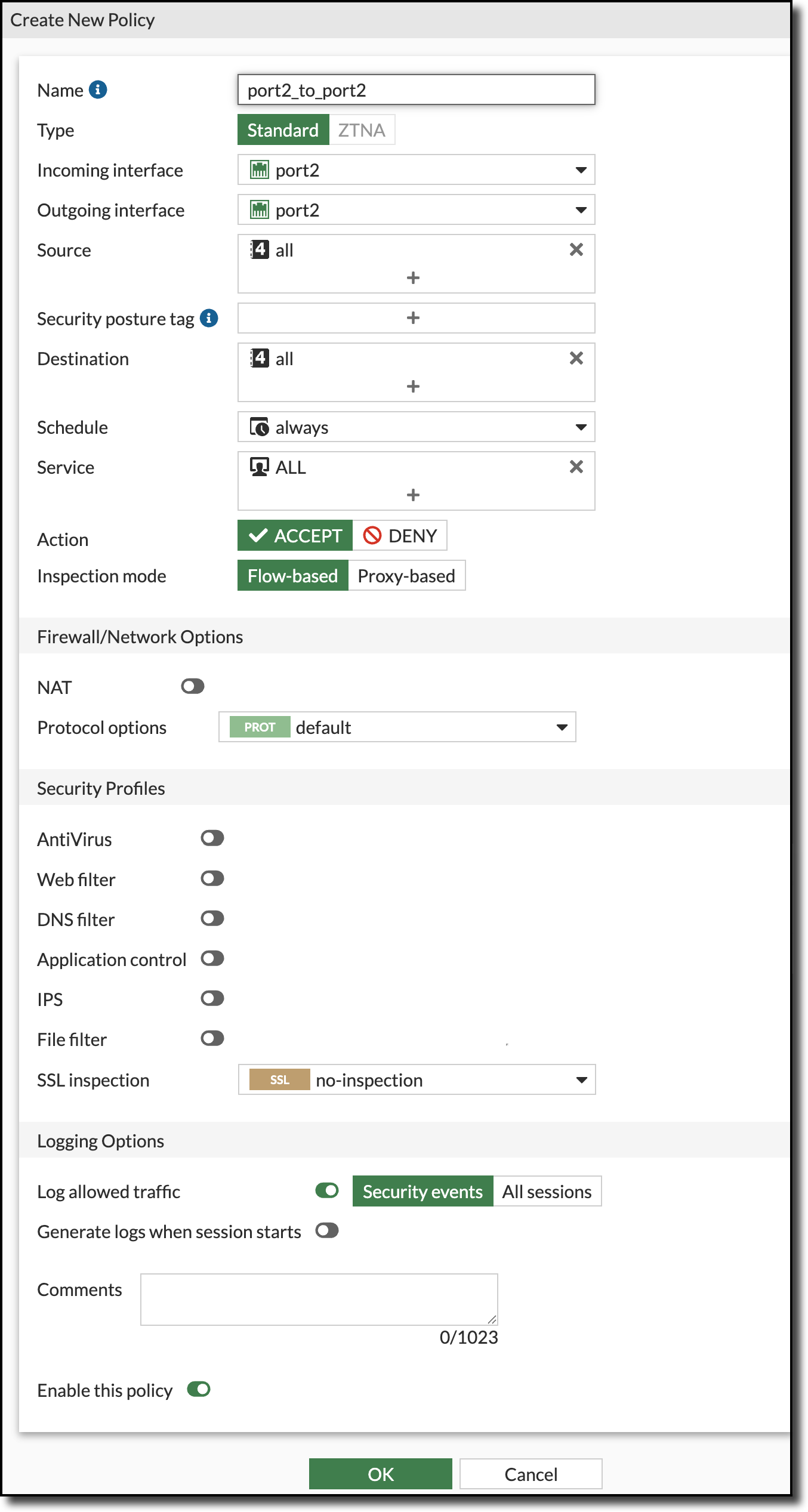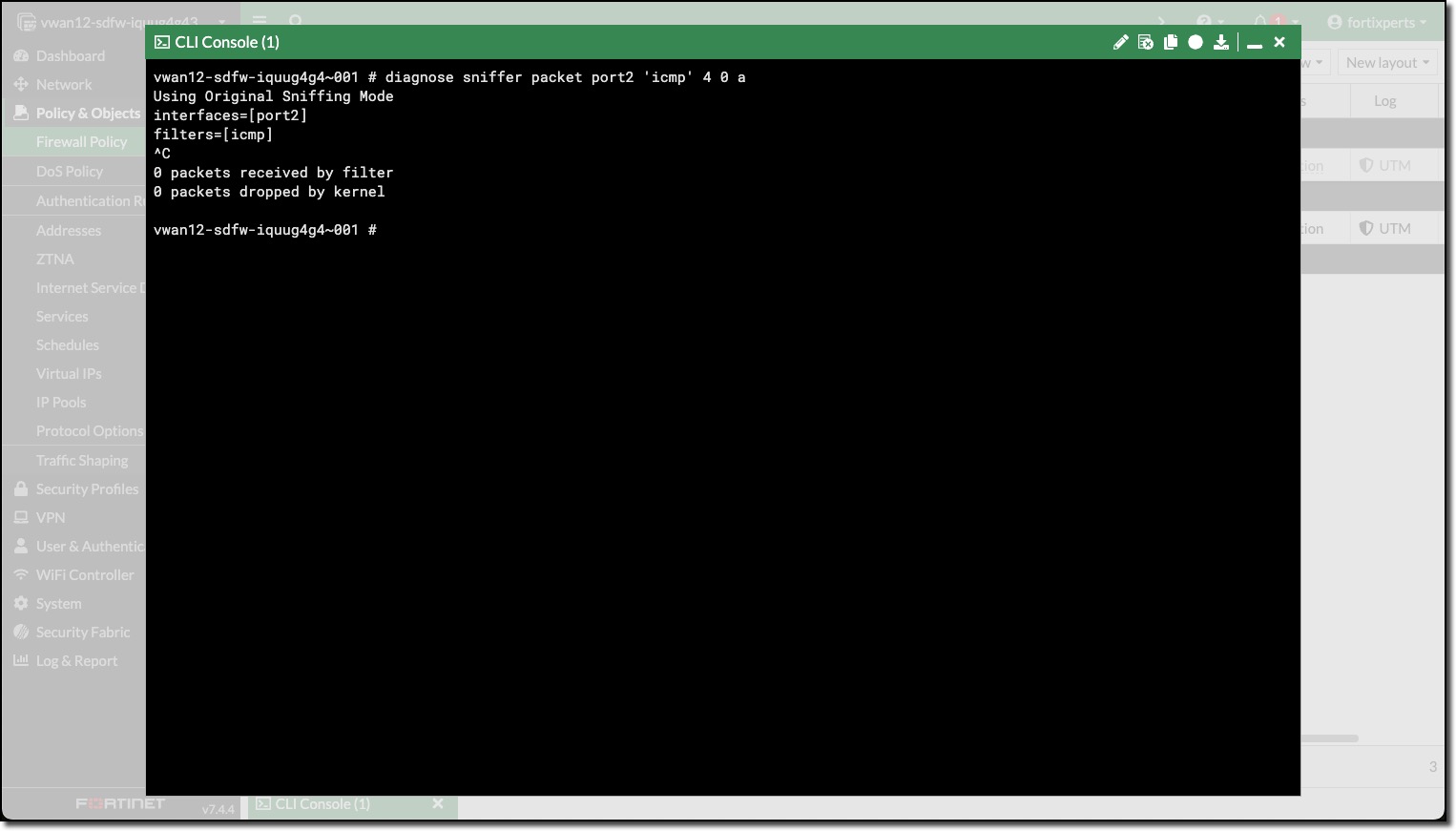Task 1: East-West Network Traffic
In this task create FortiGate firewall policies to allow east-west network traffic.
Spoke to Spoke traffic (East-West)
Ping between Linux Spoke VMs.
Open a serial console connections to each Linux Spoke VM and ping the other Spoke VM
- Linux-Spoke1-VM -
ping 192.168.2.4 - Linux-Spoke2-VM -
ping 192.168.1.4
Linux-Spoke1-VM Linux-Spoke2-VM - Linux-Spoke1-VM -
Neither ping will be successful because the FortiGates are not allowing traffic from port2 to port2, even though port2 would be considered trusted since the traffic is all internal. This is the FortiGate’s ability to micro-segment the traffic.
However, the traffic from each VM does reach the FortiGate, but it is dropped. Firewall Policies are required to allow traffic to pass from port2 to port2.
View ping traffic from Spoke VMs reaching the FortiGates
- Open each FortiGate in a browser tab/window
- Open FortiGate CLI
- Run CLI command
diagnose sniffer packet port2 'icmp' 4 0 a- 4 - means: print header of packets with interface name
- 0 - means: continuous output
- a - means: absolute UTC time, yyyy-mm-dd hh:mm:ss.ms
FortiGate 0 FortiGate 1 
The ping traffic is only on one FortiGate, this is because the internal load balancer sends traffic from the Spokes to one of the FortiGates for inspection.
Create Firewall policies on both FortiGates to allow traffic to pass from port2 to port2 (Spoke to Spoke)
NOTE: The FortiGates can be setup to sync configuration information. If one of the FortiGates was designated as the primary configuration supplier and the other as a secondary, any changes made to the primary would be replicated to the secondary.
Configuration Synchronization was not enabled on the FortiGates as part of this course.
Navigate to “Policy & Objects”
Click Firewall Policy
Click Create new
Attribute Value Name port2_to_port2Incoming interface port2 Outgoing interface port2 Source all Destination all Schedule always Service ALL NAT disabled Enable this policy enabled Click “OK”

Ping between Linux Spoke VMs and confirm connectivity.
- Linux-Spoke1-VM -
ping 192.168.2.4 - Linux-Spoke2-VM -
ping 192.168.1.4Linux-Spoke1-VM Linux-Spoke2-VM FortiGate 0 FortiGate 1 
- Linux-Spoke1-VM -
Continue to Chapter 5 - Task 2: North-South Network Traffic